FP7 projects
- Past Projects
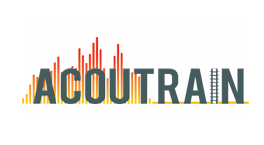
ACOUTRAIN
ACOUTRAIN is a 3-year project which unites 15 partners from across Europe, including 4 manufacturers, 2 small companies, 2 railway operators, 5 universities and research centers, 1 rail sector association, and 1 consulting firm.
ACOUTRAIN’s main objective, promoting the interoperability of rail traffic in Europe, can be detailed as dramatically reducing the time and cost of the TSI Noise conformity assessment procedure, harmonising the process for noise conformity assessment across Europe by providing standard procedures, clarifying the application of the simplified evaluation method introduced by the partial revision of the TSI Noise by providing specific examples, and investigating a wider technical scope and impact of the certification procedure.
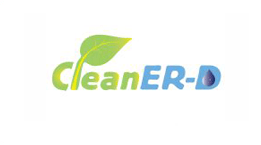
CLEANER-D
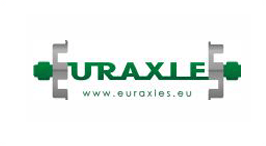
EURAXLES
EURAXLES was a 3-year R&D project lead by UNIFE uniting 23 partners from across Europe, including 6 axle manufacturers, 4 railway operators/IMs, 2 system integrators, 3 technology supplies, 5 unifersities, 2 rail sector associations, and 1 consulting firm.
EURAXLES aims to bring the risk of failure of railway axles to such a minimum level that it will no longer be considered as a significant threat to the safe operation of the European interoperable railway system; at the same time, it shall keep the cost of maintenance to a reasonable level and minimise the risk of service disruption.
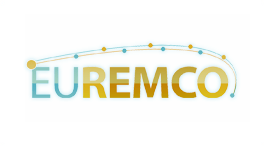
EUREMCO
The main objective of EUREMCO is to harmonise and reduce the certification process of rail vehicles against Electromagnetic Compatibility (EMC). The main concept of the project is to specify the conditions for cross-accepted certification all around Europe, through sound scientific methodologies allowing for the identification of the “transfer functions” to be applied to results obtained on different test tracks in different countries, for the same power supply system.
By also addressing non-electrified lines, the project will cover the entire European railway network. By closing the corresponding “open points” in the TSIs, the project will lead to a time and cost reduction in the certification process of rail vehicles against Electromagnetic Compatibility issues, corresponding to an estimated saving of €60m for the next 15 years.
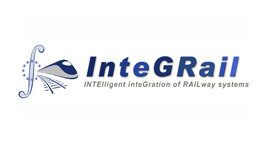
INTEGRAIL
The integrated EU funded research project Intelligent InteGration of Railway Systems (InteGRail) developed and tested a coherent platform for future oriented Information and Communication (ICT) solutions in the railways.
Over the years, the 39 partners – industry, operators, scientists and associations – developed the InteGRail Information System (IGRIS), a reference platform for integrated information sharing, as well as pilot applications that are running on this platform.
The project produced input for a standardized Railway KPI structure, Railway Data Model, Standard Railway Service Grid Architecture as well as for a standard Intelligent Railway Communication Framework (ICOM).
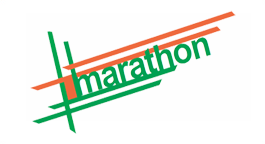
MARATHON
MAke RAil The HOpe for protecting Nature (MARATHON) shows the effectiveness of operating faster, longer and heavier freight trains on selected European routes, driving the rail freight service modernization. The European manufacturing and logistics industry will be able to attain substantial service and costs benefits from this innovative business approach.
MARATHON investigates the integration of rolling stock technologies combined with innovative operating patterns in order to provide freight services based on longer heavier and faster trains. This major step change is achieved by coupling together at specific locations trains or wagons into one train. From there the single train, optimizing infrastructure capacity and personnel, runs over main routes reducing costs and improving service performance.
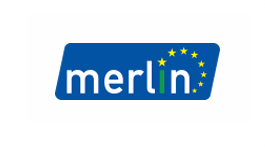
MERLIN
Management of Energy for smarter RaiLway systems in Europe: an INtegrated optimisation approach. MERLIN’s main aim and purpose is to investigate and demonstrate the viability of an integrated management system to achieve a more sustainable and optimised energy usage in European electric mainline railway systems.
MERLIN will provide an integrated optimisation approach that includes multiple elements, dynamic forecasting, supply-demand scenarios and cost considerations to support operational decisions leading to a cost-effective intelligent management of energy and resources.
MERLIN will also deliver the interface protocol and the architecture for energy management systems in the railway domain, combining the technical development with new business models that would enable and foster their application.
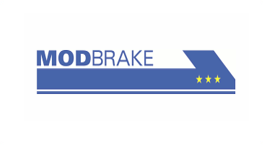
MODBRAKE
MODBRAKE stands for innovative MODular BRAKE Concepts for the Integrated European High Speed Railway System.
MODBRAKE aims at contributing to the practical implementation of interoperability of railway systems across Europe by addressing brake system performance. The project follows the vision and approach of the Integrated project MODTRAIN.
In May 2009 the consortium submitted proposals for standardisation for air supply, bogie equipment and brake control modules to CEN/CENELEC, they are tested until project end in October 2009.
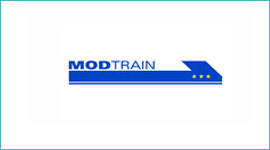
MODTRAIN
MODTRAIN stood for Innovative Modular Vehicle Concepts for an Integrated European Railway System.
Its objectives included increased productivity of rolling stock, reduction of the manufacturing costs as well as time-to-market, increased reliability and lower maintenance costs.
For that purpose, MODTRAIN aimed at the definition and standardisation of the necessary functional, electrical and mechanical interfaces and validation procedures to deliver the range of interchangeable modules, which will form the basis for the next generation on intercity trains and universal locomotives.
Key deliverables of MODTRAIN such as the Functional Breakdown Structure, Component Specifications have already been transmitted to CEN & CENELEC for further steps in the standardisation process.
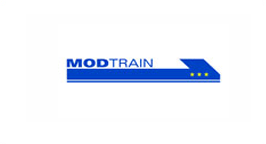
MODURBAN
The MODular URBAN Guided Rail System project, or in short MODURBAN, was a joint R&D project.
The MODURBAN project was launched at the beginning of 2005 with the aim of providing common functional specifications for operators and a common technical architecture for manufacturers. These general objectives are fully in line with one of UNIFE’s overall missions – namely to promote standardisation and the harmonisation of interfaces.
Benefits are the reduction of the cost for buying and running urban rail systems as a whole. Some of the findings were successfully demonstrated on the Metro de Madrid network on December 16 2008.
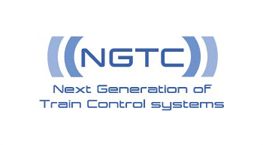
NGTC
Next Generation Train Control (NGTC) is the first research project partially funded by the European Commission under the 7th Framework Programme, where all the main rail system signalling suppliers together with mainline operators and infrastructure managers as well as urban rail operators are going to be working jointly in developing the next generation of train control systems.
The technical objective of the project is paving the way for standardized train control systems for mainline and urban domains which provide complete ATP (Automatic Train Protection), ATO (Automatic Train Operation), and ATS (Automatic Train Supervision) functionality and support train operation from Grade of Automation GOA0 to GOA4, whilst significantly reducing total cost of ownership and life cycle costs, and achieving an overall improvement in performance at lower cost.

OSIRIS
The project concept is to develop Optimal Strategies to Innovate and Reduce energy consumption In urban rail Systems (OSIRIS) by implementing technological and operational solutions and tools, while testing/demonstrating/assessing their individual and combined benefits in real case scenarios.
OSIRIS will define the overall operational requirements and needs allowing the development of a global approach for the simulation, optimisation and benchmarking of the energy consumption of urban rail systems applicable to Light Rail Vehicles, Metro and Suburban train sets. Furthermore, a series of standardised duty cycles and key performance indicators for urban rail systems to allow for direct performance comparisons and benchmarking will be defined.

PM ‘N’ IDEA
Predictive Maintenance employing Non-intrusive Inspection & Data Analysis (PM ‘n’ IDEA) – is a European research project focused on the development of novel inspection and sensor technologies for rail track infrastructure.
It has two drivers:
-To contribute towards the realisation of a 24 x 7 railway by minimising the disruption caused by activities such as inspection, remedial and reactive maintenance, and track renewal
-The introduction of novel sensor and inspection technologies which focus on the monitoring of degradation through the measurement of deviation from an identified “signature tune”
Both of these drivers promote the use of urban transport, which contributes to lowering congestion and the impact on the environment.

RAILENERGY
Railenergy – Innovative Integrated Energy Efficiency Solutions for Railway Rolling Stock, Rail Infrastructure and Train Operation is an integrated research project which aims at reducing the energy consumption in the entire railway system by 6% until 2020.
The project partners are investigating and validating solutions ranging from the introduction of innovative traction technologies, components and layouts to the development of rolling stock, operation and infrastructure management strategies.
Railenergy will thus contribute to the reduction of life cycle costs of the railway operation and of CO2 emissions.
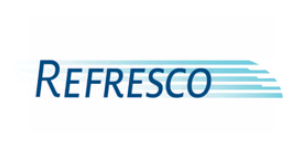
REFRESCO
Towards a REgulatory FRamework for the usE of Structural new materials in railway passenger and freight CarbOdyshells (REFRESCO). Significant reductions in emissions due to transport are being demanded by governments and policy-makers, as well as by society. Reductions in the energy consumption of railway rolling stock are therefore an important objective. It is in this context of ‘lightweighting’ of rolling stock that the REFRESCO project has been conceived. New materials such as composites and light metallic alloys encourage hopes of the construction of lighter rolling stock, which will consume less energy and help reduce the emissions of rail transport. While composite materials have already been used in the manufacture of parts of rolling stock, there is currently no way to certify a rail vehicle built entirely or in large part from non-metallic materials.
The overall objective of REFRESCO is to set the framework for the implementation of new materials in the railway sector through the evolution of certification processes for rolling stock. REFRESCO will generate recommendations and provide the information needed to adapt the regulatory framework of railway carbody structures to the introduction of new materials.
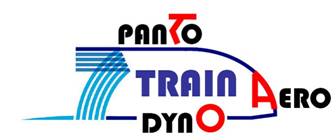
TRIO-TRAIN
Trio-TRAIN is a cluster of integrated research projects. The projects aim at further promoting interoperability by increasing virtual certification, i.e. replacing testing by simulation and proposing a simplification of the authorisation processes through an optimised mix of field testing, mock-up testing and simulation.
The overall goal is to contribute to the competitiveness of rail by reducing the costs and time of certification.
TrioTRAIN will therefore address the most relevant issues for a rail vehicle certification, namely: the train aerodynamics (AeroTRAIN); the vehicle dynamics (DynoTRAIN); the pantograph-catenary interaction (PantoTRAIN).
When necessary, the “open points” in the TSI and inconstancies in the existing acceptance criteria will be closed by proposing revision of these criteria.
| AeroTRAIN Duration: June 2009 – May 2012 Budget: 4.04 million EUR Partners: 18 |
PantoTRAIN Duration: June 2009 – May 2012 Budget 3.63 million EUR Partners: 16 |
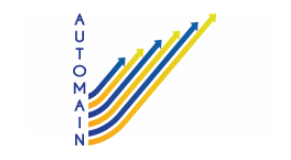
AUTOMAIN
Augmented Usage of Track by Optimisation of Maintenance, Allocation and Inspection of railway Networks (AUTOMAIN) – is a European research project focusing on innovations that will decrease the railway capacity required for inspection and maintenance. The high level aim of the project is to make the movement of freight by rail more dependable (reliable, available, maintainable and safe) through the generation of additional capacitiy on the existing network. Through the widespread introduction of automation that is designed to improve Reliability, Availability, Maintainability and Safety (RAMS) of railway infrastructure equipment and systems, it is anticipated that required possession time of the railway could be reduced by as much as 40%.
The project will develop new processes and technologies that will enable infrastructure maintainers to move towards a 24 hour a day, 7 day a week railway.
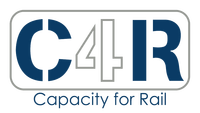
CAPACITY4RAIL
CAPACITY4RAIL: New Concept for Railway infrastructure and operation: adaptable, resilient and high capacity aims to bring a system vision of the railways looking towards 2030/2050, by proposing guidelines for future deployments in the mid-term and recommendations for technologies to be developed and deployed in the long-term in order to obtain an affordable, adaptable, automated, resilient and high-capacity railway. With a comprehensive system vision, it will contribute to the development of guidance documents that identify further actions to be taken and future technologies and systems to be developed. It will demonstrate that a step change in railway infrastructure and operations may be achieved within the constraints of the need to maintain railway services while work is being carried out.
The project will build on various past and ongoing research projects. The project will be structured into four Sub-Projects related to infrastructure: track, freight, operation, and advanced monitoring. A fifth transversal Sub-Project will give the project a system view and ensure the connection between the other Sub-Projects. The full sustainability of the developed solutions and innovations will be assessed and scenarios for a smooth migration of the system from its current to its future state will be evaluated.
The project challenges will concern the use of existing know-how, the implementation of findings, the need to find timely low cost ways to add capacity, and rapid implementability at minimal cost. The coordination is of vital importance, which aims to create an open and creative atmosphere and keep a multi-disciplinary system approach.
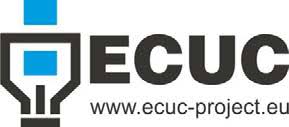
ECUC
Eddy CUrrent Brake Compatibility (ECUC) is a jointly funded European research project co-funded by the European Commission under FP7. ECUC aims to prove that linear eddy-current brake (ECB) is a very effective and applicable solution for increasing the braking capacity of new high speed trains and solving the concerns raised by infrastructure managers by proposing concrete and realistic solutions to overcome the drawbacks that ECB have experienced on some lines.
The ECUC breakthroughs will be:
- the development of a holistic model which integrates the interaction between linear eddy-current brake and signalling systems and infrastructure
- the identification of the representative worst case conditions not only for linear eddy-current brake, but also for the rolling stock, signalling systems and tracks
- proposal of technical recommendation with new requirements for linear eddy-current brake and the infrastructure and a testing procedure for trains equipped with linear eddy-current brake
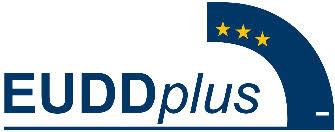
EUDDPLUS
The objective of the project EUDDplus is to enhance a Europe wide standardisation and harmonisation of a loco driver’s desk functional arrangement and layout, including the testing and verification of the ergonomic advantages, sub system performance and the potential economic benefits (LCC).
A UIC 612 conform European drivers desk will be implemented and tested (usability testing) at vehicle technology platforms (locomotives) under cross-border operation.

INNOTRACK
INNOTRACK is a joint Infrastructure Managers – Industry EU-funded research project aimed at developing cost-effective high performance track infrastructure for heavy rail systems.
The overall objective is to reduce the LCC (life-cycle cost) by 30% while improving the RAMS characteristics (Reliability, Availability, Maintainability and Safety) of a conventional line with a mixed traffic duty.
This is being achieved by undertaking technology-driven innovative research in the four key areas of Track Support Structure, Switches and Crossings, Rails and Welding, and Logistics for track maintenance and renewal.

MODSAFE
MODSafe – The European Urban Guided Transport sector (Lightrail, Metro, but also Tramway and Regional Commuter trains) is still characterised by a highly diversified landscape of Safety Requirements, Safety Models, Responsibilities and Roles, and Safety Approval, Acceptance and Certification Schemes. While a certain convergence in architectures and systems can be observed (e.g. through MODURBAN but also through larger procurements like OURAGAN in Paris or PPP-Refurbishments in London) the safety life cycle still differs from country to country and sometimes even within one country. The purpose of the MODSAFE project is to take research of major steps of the Safety Life Cycle of urban guided transport systems in Europe. Even if the rail safety landscape of urban guided transport is highly diversified, the sector will benefit greatly from further levels of harmonisation in safety assessment and safety approval processes.

PROTECTRAIL
PROTECTRAIL will develop an integrated system to improve the security of rail transportation through better protection of railways (infrastructures) and trains, and to reduce disparity in security between European railway systems. Its challenge is to make interoperable the single asset-specific solutions and to conceive and design a modular architectural framework where each asset specific solution can be “plugged”.
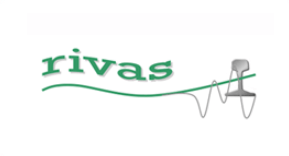
RIVAS
Railway Induced Vibration Abatement Solutions (RIVAS) – is a European research project which aims to reduce the environmental impact of ground-borne vibration while safeguarding the commercial competitiveness of the railway sector.
For several areas of concern, vibration should be reduced to near or even below the threshold of perception. The project goal is to provide the tools to solve vibration problems for surface lines by 2013. It will develop relevant and world leading technologies to ensure efficient control of people’s exposure to vibration and vibration-induced noise caused by rail traffic.
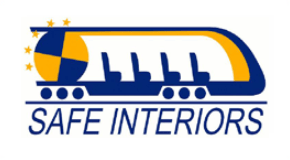
SAFEINTERIORS
Train Interior Passive Safety for Europe – is an integrated research project partly funded by the European Commission under the 6th Framework Programme.
SAFEINTERIORS is aimed at providing tangible and commercially viable solutions and a system approach to methodically reduce injuries and fatalities by combining and exploiting in a cost efficient and optimised manner the already well matured railway structural crashworthiness, with injury biomechanics, directly associated with secondary collisions.

SECUR-ED
SECUR-ED Project is a demonstration project with an objective to provide a set of tools to improve urban transport security. Participants include all the major stakeholders from across Europe.
Based predominantly on existing best practices, SECUR-ED integrates a consistent, interoperable mix of technologies and processes from risk assessment to complete training packages. These solutions reflect the diverse environment of mass transportation as regards societal and concerns and legacy security systems.
The rationale of SECUR-ED is to create an overall improvement in European mass transportation security through the development of packaged modular solutions which are validated in several demonstrations. These solutions are aimed to be used on transport systems in the medium and large sized cities of Europe.
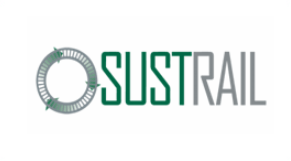
SUSTRAIL
SUSTRAIL – The sustainable freight railway: designing the freight vehicle – track system for higher delivered tonnage with improved availability at reduced cost – is a European research project and aims to contribute to a new era in increased competitiveness of the rail freight sector by adopting a holistic approach, implementing a clear methodology and viable procedures for a combined improvement in both freight vehicles and track components.
This deliberate approach has been conceived and will be developed to achieve innovations in both vehicles and rail infrastructures. New design (including aerodynamics) models and novel lightweight materials with a targeted increased in speed and axle-load will be implemented for freight vehicles, as well as optimised geometry, ground stabilisation and novel monitoring techniques will be adopted for higher reliability and reduced maintenance of the track components.
The benefit will be an increased performance of the whole rail freight system (vehicle plus track), which will be assessed and quantified through the implementation of appropriate life cycle and costs analyses.
Finally, business cases will be produced to demonstrate that the contributions, solutions and innovations that SUSTRAIL aims to introduce in the railway sector are viable on real route
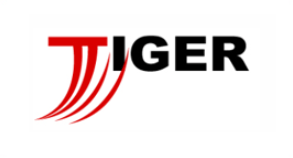
TIGER
The TIGER project (“Transit via Innovative Gateway concepts solving European – intermodal Rail needs”) was set-up for the development of Rail transport in competitive and co-modal freight logistics chains.
TIGER will study the necessary step changes for providing a solution to EU ports and road congestion in order to keep the traffic moving through the European ports, to increase rail freight’s market share and improving the Rail Network productivity.
Four separate demonstrators were planned to support the development of intermodality in Europe (Genoa Fast Corridor, Mariplat, Innovatice Port & Hinterland Operations and Intermodal Network 2015).
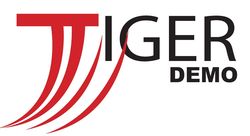
TIGER DEMO
Trans-Rail Integrated Goods European-Express Routes DEMOnstrators (TIGER DEMO) is the continuation of the TIGER Project.
TIGER DEMO will accompany the original TIGER Pilots into full scale demonstrators. TIGER DEMO, during the Full Scale Demonstration will manage the various services fine tuning, being their effective performances fundamental for achieving the full commercial exploitation in the market place.
TIGER DEMO is planning co-modal solutions for maritime traffic flows in four different geographical locations of Europe. Such solutions take into consideration both the geographical peculiarities of each zone and their operational environment.
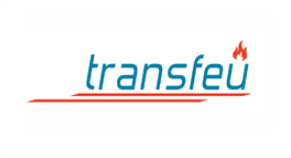
TRANSFEU
The main goal of TRANSFEU is to develop a holistic approach of fire safety-performance based-design methodology able to support efficiently European surface transport standardisation. In particular, the project will directly contribute to the finalisation of the CEN EN 45545 Part 2 for a dynamic measure of toxicity and to use FSE and simulation as a possible alternative to current Fire safety regulation and standard (TSI and TS 45545).
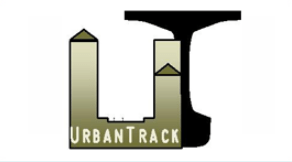
URBAN TRACK
Urban Track is an EU-funded research project aimed at developing, testing and validating innovative products and methods for urban rail track infrastructure.
It focuses on developing track systems with a ‘2020 ERRAC vision’: low life cycle cost, high performing, modular, safe, low noise and vibration – which fit into a harmonised European market. The overall objective is a reduction in LCC of urban track infrastructure by 25%.
Urban Track considers new lines (development of modular maintenance free ballast less slab-track systems) as well as existing lines (optimisation of renewal and maintenance methods).

WIDEM
The WIDEM project aims to improve efficiency and competitiveness through a fundamental re-examination of wheel set design, which in turn will facilitate improved maintenance practices. Additionally, the project will develop and evaluate alternative NDT (non-destructive testing) techniques that allow a greatly increased detection probability and a size estimation of cracks to set up a schedule for NDT periodicity inspection. The research work will lead to the definition of wheel set design procedures and maintenance methods to be implemented into existing standards.
The project will have to integrate recent developments in areas such as rolling contact fatigue performed in ongoing European research projects.
The integration of measured load spectra with the experimental material data, including fracture failure and inspection considerations, will finalise the key objective of the project: provide a new endurance strength design concept for railway wheel set.